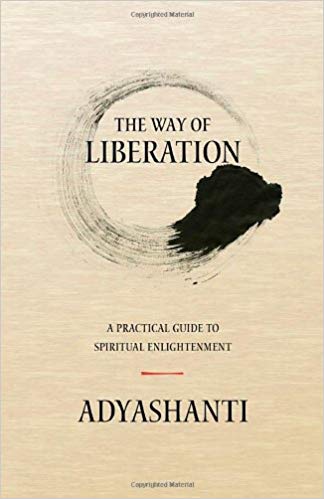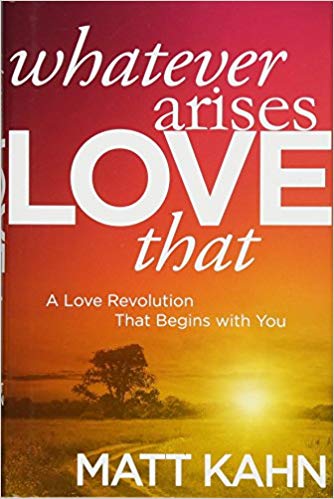RECOMMENDED READINGS
I have read and listened my way from fear to peace and found a deep heart opening through great teachers—many of whom I had never met. Still, their words and insights were like a healing salve that seemed to coat and eventually heal the deep wounds my being had endured for many years. I slowly uncovered the fears that hid within me that blocked me from experiencing a sense of clam overall wellbeing—peacefulness.
I share these teachings so that you too can begin or continue your healing process as well. Certain books spoke to me at different times on my journey. I have re-listened to and re-read many of these books, over and over, as the words seem to be absorbed within my being and as each encounter offers deeper and greater distillation. There are effective strategies and techniques that over time truly shift our direct experience with what is happening. I encourage you to try one book at a time. Each of one of them shares a different element or perspective on what obstructs us from experiencing peace and the means by which we can access that sense of calm over all wellbeing within ourselves.
Hardwiring Happiness —Rick Hanson
KEY INSIGHT: Although you can’t change an experience, you can change how you feel about it. Rick Hanson, a leading neuroscientist, not only explains why the brain is more susceptible to negative thoughts and beliefs, but also shares how this wiring can be changed over time. We can shift our negative bias of thoughts to be more positive, healthy and resilient. There is a famous saying that the mind takes the shape of what it rests upon. In other words, where we put our attention and what we focus on defines the wellbeing of our brain. Our brains are like gardens, we can either put up with the weeds and the flowers, or we can consciously pull up the weeds and grow more flowers.
In Touch —John Pendergrast
KEY INSIGHT: The heart holds our deepest knowing. Uncovering and living by this truth allows our unique journey to unfold beautifully.
John Prendergast is a magnificent teacher and guide, directing us to our own deep knowing of what is most valuable to each of us in any given moment. Through his teaching, we discover that when we shift our primary attention from the mind to the heart, we begin to experience what feels right to us as well as what doesn’t. The ability to listen to the body as it guides us toward our deepest sense of happiness and contentment is like using an inner compass that knows which direction we must follow.
The Blind Spot Effect —Kelly Boys
KEY INSIGHT: Discovering where we are blind helps us to see.
Blind spots manifest when we are unable to see truth because of our past conditioning. Stored within our subconscious are hidden beliefs about ourselves, like being unlovable or unworthy. They cause us to operate on autopilot, acting in ways to avoid these feelings. Unfortunately, the outcomes of these unconscious behaviors usually validate the negative belief. It is difficult to see what we are unconsciously avoiding. But by becoming aware of the thought patterns, beliefs and emotions that arise within ourselves, we can begin to access our blind spots. It is through a gentle welcoming practice of allowing ourselves to acknowledge the false stories about ourselves that we become more whole, integrating the wounded past with our truth of the present. This work requires great self-compassion, knowing that we are doing the best that we can.
Love 2.0: Finding Happiness and Health in Moments of Connection —Barbara Fredrickson
KEY INSIGHT: Love is an inside job, available to be shared at any given moment.
This book helped me not only redefine love, but also expand my definition of it. Scientific research shows that love is far more than a positive emotion one experiences with just those close to them. Instead, it is a group of emotions that we experience moment-to-moment when activated. Love draws us out of our cocoons of isolation to attune to others, creating micro moments of love. These consistent doses of love can help us to grow, change, and become healthier and more resilient over time. The great news is that if we pay attention and actively cultivate our feelings, we can experience these micro moments of love with other individuals, even strangers, as well as within ourselves. And we need to feel love within ourselves, so that we can feel love when we connect with others.
The Freedom of Being at ease with what is —Jan Frazier
KEY INSIGHT: What is happening on the inside of our system is not the same as what is happening on the outside.
Jan Frazier is a gifted writer, enabling the reader to directly experience the way in which the mind personalizes or conceptualizes what is happening moment-to-moment that distracts us from directly experiencing the present. What is happening simultaneously is that while we are living our lives, our mind is narrating the events and qualifying them as pleasurable or not. In return, our body receives messages communicating the mind’s perception of the situation. Our reaction to the situation is based on these messages. However, the event that is taking place at any given moment is free from these beliefs. They are just events with no quality to them. We assign them quality and when we do this, we suffer. We are resisting the unpleasant sensations being activated in our system. What would happen if we got in touch with these bodily feelings and allowed them their due course? The felt sensations would arise, be experienced, and then dissolved in a matter of minutes. It is our resistance to these feelings that is most painful.
A Mind at Home with Itself —Byron Katie
KEY INSIGHT: What we believe to be true might not be. In fact, the opposite might be true.
Our rigid attachment to beliefs causes us great stress, anxiety, and depression. This book instilled one of the greatest lessons that I have learned: to not believe my thoughts. This may sound radical and crazy, but one thing that I have become certain of is that my thoughts are just that—only thoughts. They cannot, and do not, live outside of my head. It is the unconscious attachment to every thought both “good’ and “bad” that has caused me much of my suffering. Byron Katie’s approach of questioning our thoughts and asking ourselves if they are true and could the opposite be true, too, awakens our awareness to our blind commitment to these beliefs. Simply by asking ourselves the question, Is it true?, we begin to free ourselves from unconscious, negative beliefs about ourselves and others.
The Gifts of Imperfection —Brene Brown
KEY INSIGHT: Although we are used to protecting ourselves from being vulnerable, leaning into this discomfort is the key to love, joy and peace.
When we allow ourselves to face our weaknesses, we are demonstrating incredible bravery. There is a great deal of shame and sense of unworthiness that inhibits many of us from revealing our more sensitive, intimate self. However, if we can tap into the energy that fuels courage and the willingness to face our fears, we begin to chip away at the root causes of it: shame and unworthiness. We need to be wise with whom we connect with when asking for compassion in a given moment. However, it is in the sharing with a confidant our experiences of shame and unworthiness that they begin to dissolve and loosen their grip on our wellbeing.
The Way of Liberation —Adyashanti
KEY INSIGHT: The journey to freedom from our suffering is all about letting go, not adding on.
Adyashanti is one of the most clear and direct teachers for knowing truth and experiencing peace. We must let go of the expectations, judgements, beliefs and identities that we are blindly attached to if we truly want to experience consistent peace—especially during difficult times. Most of us don’t even know that we are holding onto these things. We just think, This is who I am. Consider this: We are directly experiencing each moment. Any belief that we place on the moment is like a subtitle added on to a silent movie. What we experience (without our stories of what should or shouldn’t be happening) is reality. It is our ego’s need to qualify and analyze what reality is that causes suffering. Believing a single thought that opposes the way things are, or have been, causes emotional pain.
Nonviolent Communication —Marshall Rosenberg
KEY INSIGHT: Although we may believe we are angry or upset by what people say or do, in reality, we are responding to something within ourselves.
While reading this book, I realized that a great deal of my unhappiness and stress arose from conflicts with others. I was often making unconscious demands of others in the guise of a request and others were doing the same to me. This common approach of communication can cause ruptures in relationships. Marshall Rosenberg not only explains that the underlying cause of all conflicts is that one of our basic human needs is not being met, he also teaches us how we can repair the ruptured moment by using NVC tools. First, observe rather than judge the chain of events that cause the unwelcome feelings. Next, name our feelings and share which of our basic needs is not being met. Finally, instead of demanding others meet our expectations, request their support. We no longer unconsciously expect others to make us happy. We can also recognize that others struggle with their needs not being met as well and see them more compassionately. This empathy enables us to have greater capacity to support others.
Whatever Arises, Love That —Matt Kahn
KEY INSIGHT: What we are waiting for others to do or tell us, we need to do for ourselves.
We spend a great deal of time hoping that others will validate our worthiness and satisfy our deepest desires. Instead, Matt Kahn asks us to love ourselves, all of ourselves! It might seem easy to love the me that is kind, generous, and understanding. Meanwhile, it’s more difficult to love those parts of ourselves that are jealous, arrogant, sad, guilty, angry or unworthy. For all of our emotions and thoughts there is a paired “felt sense” we can not only imagine loving ourselves, we must actually experience what love feels like in our body. If we are willing to feel loving within ourselves when these emotions arise from within, we begin to heal the old wounds that have been suppressed until now. As we experientially love all of the emotions that we experience within ourselves, we start experiencing a greater sense of peace and acceptance.
Learning to Love Yourself —Gay Hendricks
KEY INSIGHT: To love the unacceptable parts of ourselves is the most powerful healing for both the mind and the body.
This is a practical embodiment guide to learn to experience and feel compassion for the “felt senses” that we experience moment to moment even when we are feeling hurt, scared or abandoned. This skill radically shifts the body's energy from contracting and avoiding to opening and embracing. We learn to love the unacceptable parts of ourselves—our jealous, angry, rejected, lonely, etc... selves. What we discover is that there is an alchemy within our system, and we are able to hold and accept these opposing emotions and felt senses. Peace, arises more and more as the polarity of opposing emotions, thoughts, and felt senses diminishes and leaves us feeling more balanced, calm and clear.












